Involvement of Macrophage Inflammatory Protein-1 Family Members in the Development of Diabetic Neuropathy and Their Contribution to Effectiveness of Morphine
- PMID: 29593735
- PMCID: PMC5857572
- DOI: 10.3389/fimmu.2018.00494
Involvement of Macrophage Inflammatory Protein-1 Family Members in the Development of Diabetic Neuropathy and Their Contribution to Effectiveness of Morphine
Abstract
Current investigations underline the important roles of C-C motif ligands in the development of neuropathic pain; however, their participation in diabetic neuropathy is still undefined. Therefore, the goal of our study was to evaluate the participation of macrophage inflammatory protein-1 (MIP-1) family members (CCL3, CCL4, CCL9) in a streptozotocin (STZ)-induced mouse model of diabetic neuropathic pain. Single intrathecal administration of each MIP-1 member (10, 100, or 500 ng/5 μl) in naïve mice evoked hypersensitivity to mechanical (von Frey test) and thermal (cold plate test) stimuli. Concomitantly, protein analysis has shown that, 7 days following STZ injection, the levels of CCL3 and CCL9 (but not CCL4) are increased in the lumbar spinal cord. Performed additionally, immunofluorescence staining undoubtedly revealed that CCL3, CCL9, and their receptors (CCR1 and CCR5) are expressed predominantly by neurons. In vitro studies provided evidence that the observed expression of CCL3 and CCL9 may be partially of glial origin; however, this observation was only partially possible to confirm by immunohistochemical study. Single intrathecal administration of CCL3 or CCL9 neutralizing antibody (2 and 4 μg/5 μl) delayed neuropathic pain symptoms as measured at day 7 following STZ administration. Single intrathecal injection of a CCR1 antagonist (J113863; 15 and 20 μg/5 μl) also attenuated pain-related behavior as evaluated at day 7 after STZ. Both neutralizing antibodies, as well as the CCR1 antagonist, enhanced the effectiveness of morphine in STZ-induced diabetic neuropathy. These findings highlight the important roles of CCL3 and CCL9 in the pathology of diabetic neuropathic pain and suggest that they play pivotal roles in opioid analgesia.
Keywords: CCL3; CCL4; CCL9; CCR1 antagonist (J113863); neutralizing antibody.
Figures
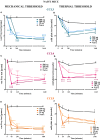
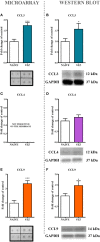
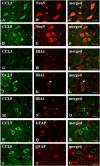

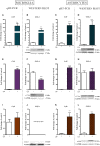

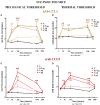
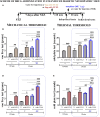

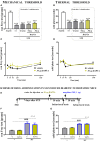
Similar articles
-
Pharmacological Modulation of the MIP-1 Family and Their Receptors Reduces Neuropathic Pain Symptoms and Influences Morphine Analgesia: Evidence from a Mouse Model.Brain Sci. 2023 Mar 29;13(4):579. doi: 10.3390/brainsci13040579. Brain Sci. 2023. PMID: 37190544 Free PMC article.
-
The blockade of CC chemokine receptor type 1 influences the level of nociceptive factors and enhances opioid analgesic potency in a rat model of neuropathic pain.Immunology. 2020 Apr;159(4):413-428. doi: 10.1111/imm.13172. Epub 2020 Feb 5. Immunology. 2020. PMID: 31919846 Free PMC article.
-
Changes in macrophage inflammatory protein-1 (MIP-1) family members expression induced by traumatic brain injury in mice.Immunobiology. 2020 May;225(3):151911. doi: 10.1016/j.imbio.2020.151911. Epub 2020 Feb 1. Immunobiology. 2020. PMID: 32059938
-
Macrophage inflammatory protein-1.Int J Biochem Cell Biol. 2004 Oct;36(10):1882-6. doi: 10.1016/j.biocel.2003.10.019. Int J Biochem Cell Biol. 2004. PMID: 15203102 Review.
-
Targeting Members of the Chemokine Family as a Novel Approach to Treating Neuropathic Pain.Molecules. 2023 Jul 30;28(15):5766. doi: 10.3390/molecules28155766. Molecules. 2023. PMID: 37570736 Free PMC article. Review.
Cited by
-
Chemogenetic Activation of CX3CR1-Expressing Spinal Microglia Using Gq-DREADD Elicits Mechanical Allodynia in Male Mice.Cells. 2021 Apr 12;10(4):874. doi: 10.3390/cells10040874. Cells. 2021. PMID: 33921365 Free PMC article.
-
Pharmacological Evidence of the Important Roles of CCR1 and CCR3 and Their Endogenous Ligands CCL2/7/8 in Hypersensitivity Based on a Murine Model of Neuropathic Pain.Cells. 2022 Dec 26;12(1):98. doi: 10.3390/cells12010098. Cells. 2022. PMID: 36611891 Free PMC article.
-
Overview of Transcriptomic Research on Type 2 Diabetes: Challenges and Perspectives.Genes (Basel). 2022 Jun 30;13(7):1176. doi: 10.3390/genes13071176. Genes (Basel). 2022. PMID: 35885959 Free PMC article. Review.
-
Relation between macrophage inflammatory protein-1 and intercellular adhesion molecule-1 and computed tomography findings in critically-ill saudi covid-19 patients.J Infect Public Health. 2022 Dec;15(12):1497-1502. doi: 10.1016/j.jiph.2022.10.023. Epub 2022 Oct 29. J Infect Public Health. 2022. PMID: 36423464 Free PMC article.
-
Comparison of the Effects of Chemokine Receptors CXCR2 and CXCR3 Pharmacological Modulation in Neuropathic Pain Model-In Vivo and In Vitro Study.Int J Mol Sci. 2021 Oct 14;22(20):11074. doi: 10.3390/ijms222011074. Int J Mol Sci. 2021. PMID: 34681732 Free PMC article.
References
Publication types
MeSH terms
Substances
LinkOut - more resources
Full Text Sources
Other Literature Sources
Medical
Research Materials

